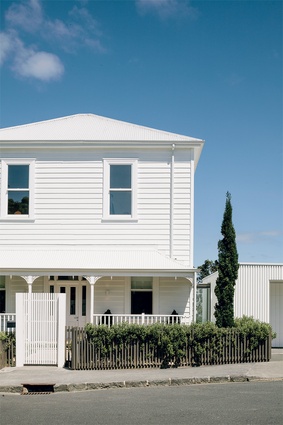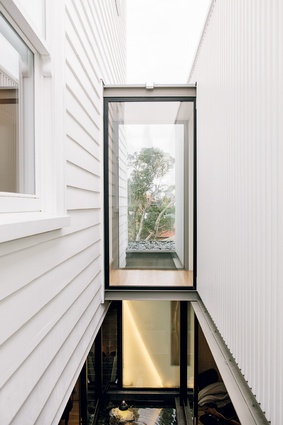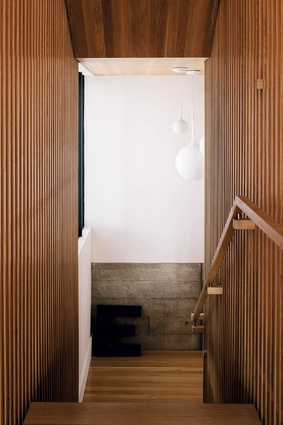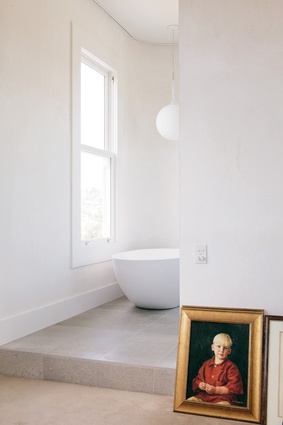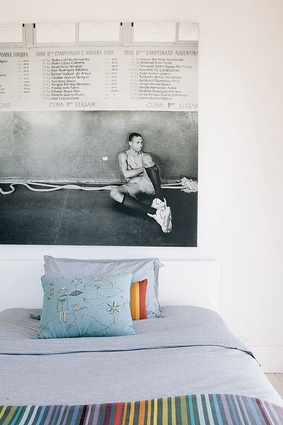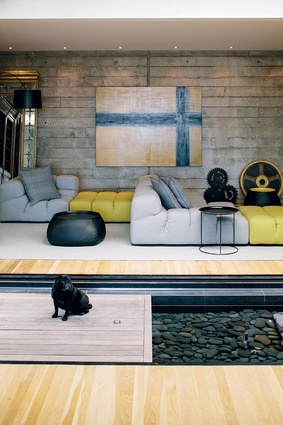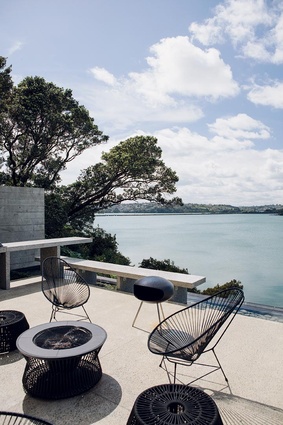The white house
We have come to idolise our villas, the old merchants’ homes, farmhouses, flat-fronted cottages and Georgian colonial designs that litter New Zealand’s cities and towns.
Originally derivative architectural migrations from the motherland (aka Great Britain), our weatherboard dwellings developed details to cater for the local topography and climate: architraves, friezes and stained glass to tame the local light; and various ornamental mouldings on external joints to keep water out. In the 1940s, we briefly fell out of love with them, which meant bungalows and art-deco structures became coveted by homebuyers. But today we are head-over-heels again with villas, despite their poor insulation, boxy rooms and sometimes sunless aspect.
This cliff-top Parnell house began its colourful history in 1860 as the local harbourmaster’s abode. From its balcony, he had an almost-180-degree view of Hobson Bay and could see the tip of the mast of every incoming ship. Angela Kiddle, the home’s owner since 2008, grew up nearby. “Some friends and I used to knock on the door and ask if the then owner wanted to sell,” she recalls. Decades later, the house came up for sale. Kiddle bought it and started extensive Herbst Architects-led renovations that brought the house into its current incarnation.
Given Parnell’s status as an historic precinct, various legal battles seeking to keep the heritage fabric of the street and the need for additional space in the 150m² house, the architects needed to think laterally while staying conscious of the home’s past.
Preparing the cliff on which the house sits for renovations was a complicated task. To reinforce the precipice, engineers Tonkin & Taylor built a palisade wall which required drilling 60 piles through the earth, past hard Waitemata sediment, and as deep as 25 metres under sea level. The exercise wore out 15 diamond drill bits. Once that was done, the old villa was lifted by a 100-ton crane and taken to the back of the section while the work was finished. “We all gasped a few times when gusts of wind made the old lady sway!” recalls Kiddle, 49.
Due to regulations, building up was out of the question so, instead, Herbst excavated an additional underground level into the face of the cliff. The idea was to create a vault that supported a traditional house. “We essentially decided to excavate a floor area that was wider than the building and set the house on top,” says Lance Herbst, principal for the project. The remaining gap was cleverly used as light wells. “One of the most challenging aspects of this site was dealing with the history of the place,” says Herbst. “In terms of building consents, we had to be extremely careful with what could and could not be done; hence our building downward.”
The interior of the villa was then gutted and reconfigured. The ground level still unravels with that colonial predictability – an all-seeing front door that leads to a long corridor from which stem a few small rooms (to the left, two bedrooms connected from the outside by a large balcony with an immaculate view of Hobson Bay; to the right, a sitting room and a small office) – but there are adaptations. The door frames have been raised to almost maximum stud height, allowing light from the balcony to stream in. Floors have been stripped and bleached to brighten up the space. At the end of the corridor, however, the classic architecture ends with a bleached-oak staircase that runs through the three levels of the house.
“You arrive through the old and into the lobby to see a massive change in materiality. You feel something drawing you into the space, asking you to explore,” explains Herbst.
Upstairs, there’s a guest room and a master suite with a generous walk-in closet and ensuite. The palette is modern and light; the rooms are designed to maximise the awe-inspiring coastal views. On the bottom, underground floor, an open-plan kitchen, living room, a separate media room and an outdoor recreation area fill the space and a concrete, industrial palette dominates. There’s warm wood, black aluminium rafters and the soundtrack of the running water from the various internal water features. The linear kitchen dominates the space, making it an excellent podium from which to entertain while cooking (two of Kiddle’s favourite activities). Directly behind the kitchen, through a discreet door, is a scullery, a service lift and a cellar. From there, one can see an unexpected internal void leading to an outdoor spa.
Back inside, the rough-sawn textures of the timber boards from the villa’s original façade have been replicated and imprinted on the subterranean concrete walls to give a nod of continuity. The rectangular media room sits directly under the garage and is separated from the rest of the floor by a long, shallow pond full of dark river stones and turtles. It’s uncovered, except for a thin glass bridge that floats above. The turtles aren’t Kiddle’s only pets – there are two piglets, two dogs and reptiles too. “The turtles sit in the pond and battle for sun space, while one of the pigs is known to kick pebbles down into the water to get my attention while I cook,” she says.
Fittingly, the furnishings throughout the house mix modernity with the old. Kiddle, who lives here with her children William, 20, and Henry, 18, is no stranger to decorating projects – this renovation is her sixth – and she has installed second-hand pieces, including an enormous 1920s’ mirror and a vase of ceramic ducklings from Paris’ Marché aux Puces flea market in the living area. They share the space with furniture from B&B Italia, light fittings from Castore Suspension, Fornasetti plates and Kiddle’s “pride and joy” – ethanol-fuelled Cocoon fires that require neither flue nor building permit.
The house is a success, says Herbst, precisely because of the mix of old and new both outdoors and in: “It was an outcome that sprang from an idea and that is very obvious when you walk in. It’s not in that which is preserved, or the historic side of the project, nor in that which is invented within it, but in the dialogue that takes place between the two.”


